Vomiting white foam can occur in cats for multiple reasons, but one of the most likely ones is hairball obstruction.
This is especially true if your pet only vomits white foam occasionally (not daily or even every week).
Other causes range from liver disease, kidney pathologies, and inflammatory bowel disease to gastritis and dietary indiscretions.
Ask a Vet
If your cat is repeatedly throwing up white foam we recommend you speak with a vet ASAP.
allows you to talk in real-time to veterinary experts for a small fee.
1. Hairball Obstructions
.

They are spotless animals and hate getting dirty, but along with their grooming routine comes the risk of hairball development.
While the majority of hairballs manage to pass through the digestive tract and are released through the faeces, some cats might experience additional complications where they can no longer eat properly, or they experience abdominal discomfort that leads them to vomit.
If they haven’t eaten and there are no secretions containing food remnants or anything else in their digestive tract, then the only thing expelled through the mouth is going to be white foam.
The hairball will most likely then change its position in the digestive tract and be eliminated along with the bowel movements.
If your cat vomits white foam every day, though, you have to take them to the vet.
2. Dietary Indiscretions or Eating Too Fast
In the wild, cats didn’t eat multiple times a day or even once a day.
They sometimes had access to food one or two times a week, so their digestive tract adapted to that.
These days, though, cats that are pets have food at their disposal all the time.
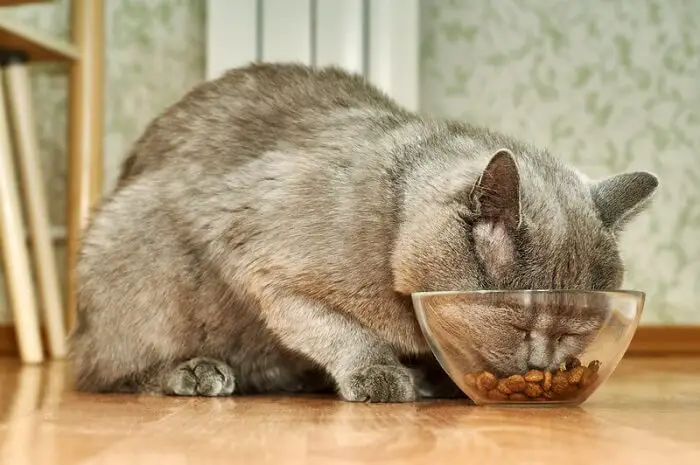
That is why they might end up suffering from obesity, for example, something that wild cats almost never develop.
But along with food being so readily available comes the tendency to overeat.
Even if the food does manage to get digested, the stomach might get too extended, and nausea might appear as a result of the local discomfort.
The same applies to situations where the cat eats too fast – in this case, along with the white foam, some of the food will be thrown up, too.
Setting a clear feeding routine for your cat is the best way to solve this issue.
Also, do not feed your cat human food as it is not safe.
3. Intestinal Parasites
When a cat has a severe parasite infestation, they might even get to the point that they throw up a worm.
But until that happens, the population of parasites becomes so large that it starts spreading to the small intestine and from there, it could easily lead to gastroenteritis and your pet throwing up foam.
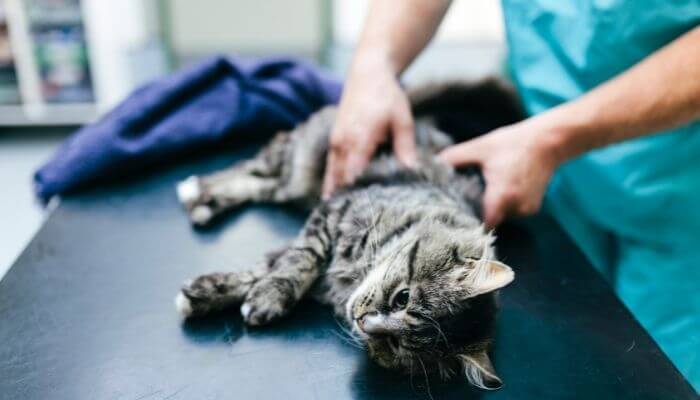
You can deworm your cat regularly, once every 3 months or so, to ensure that they do not get intestinal parasites.
Even can get them from your shoes since you can bring larvae and eggs into your home outside, for example.
4. Food Allergies
If your cat is mildly allergic or intolerant to a specific ingredient in their kibble or canned food, they may experience mild digestive distress every once in a while, such as vomiting white foam and maybe a bout of diarrhoea.
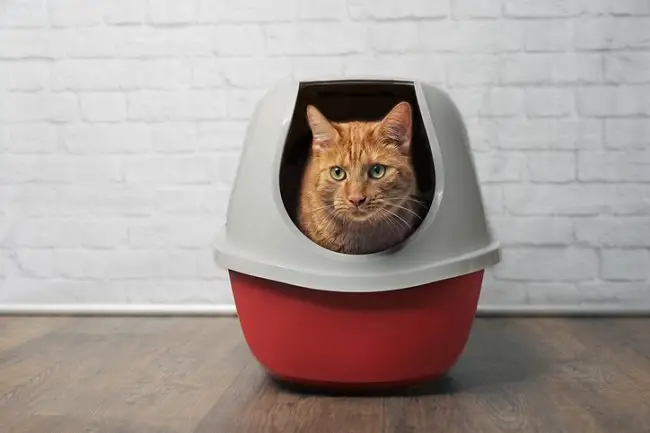
With time, though, most cats that are sensitive to a certain food or ingredient will start developing more serious clinical signs, so as per your vet’s recommendations, you’ll have to switch to a different diet.
5. Gastritis
Cats can develop acute or chronic gastritis for a variety of reasons.
For example, eating something that irritates their stomach time and again might, in time, lead to a stomach ulcer.
If that happens, your cat is going to have a really hard time digesting their food and not vomiting at all.
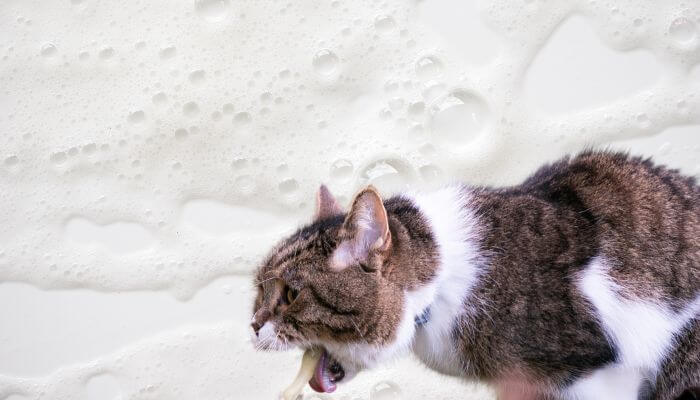
Other factors that can lead to a cat developing gastritis range from toxins and fungi to foreign objects and plants.
The treatment of feline gastritis can involve medications such as antiemetics or gastrointestinal protectants or simple changes such as withholding food for half a day and giving your cat small amounts of water so that they remain hydrated.
6. Irritable bowel syndrome
Vomiting white foam can be a symptom of IBS in cats.
IBS has multiple causes, and they can consist of stressful events, allergies or intolerances to food, or a type of colitis that is considered an autoimmune disease.
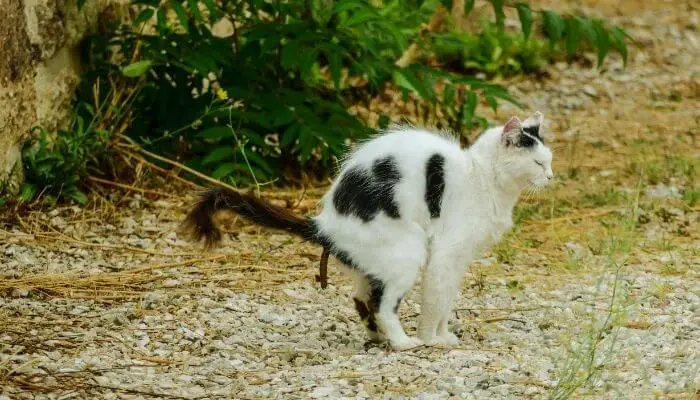
Depending on what has led to it, IBS in cats can be treated with medications that prevent anxiety or lifestyle management along with diet changes.
7. Kidney Disease
Although white foam can be present in a cat’s vomit if they have developed , the truth is that black, tarry, or coffee grounds-looking vomit is much more common.
However, the latter mostly shows up when the animal has already developed kidney failure, so only when the condition has reached a point of almost no return.
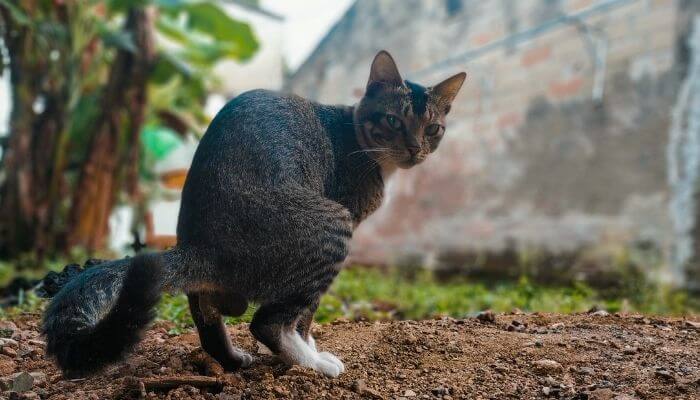
Many cats, especially senior ones, develop kidney disease, and while there are many causes of it, such as ingesting poisons or toxic plants, the truth is that the majority of cases are diagnosed because .
Kidney disease can be managed but almost never treated, especially if it’s reached the stage of kidney failure.
However, some cats can live for a couple of years or more after being diagnosed, with the appropriate lifestyle changes and regular visits to the vet.
8. Liver Disease
Vomiting white foam may not be an overly specific sign of liver disease, no matter its type.
But it could definitely occur if the liver does become affected by something that the cat ate or by repeated dietary indiscretions that lead to some of the tissue being affected.
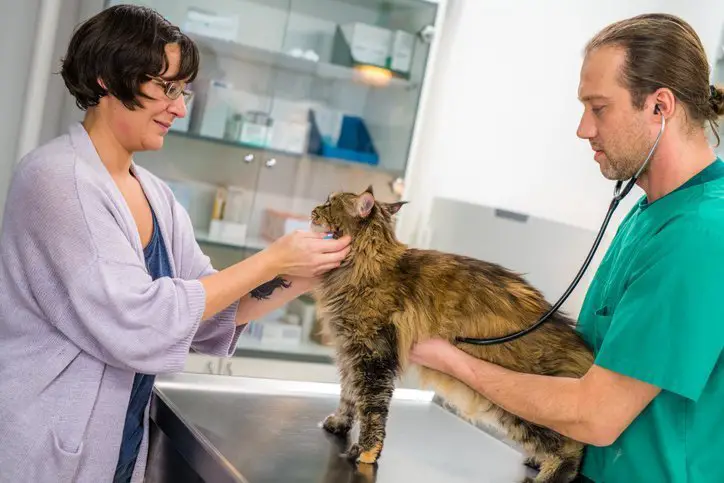
The gallbladder and the bile duct play an essential role in balancing a pet’s digestion, and if they are affected in any way, your cat will vomit, experience abdominal discomfort, and feel bad overall.
Luckily, when caught early, most types of liver diseases are treatable – this organ has an incredible capacity to regenerate, and it would take a severe intoxication to damage it completely.
Take Your Cat To The Vet If You’re Worried
As you can see, a cat can throw up white foam for multiple reasons.
The most important thing to keep in mind is that if it happens repeatedly, you have to take your pet to the animal hospital for a correct diagnosis.
Otherwise, you are not going to know the way to solve the issue, and it could become more severe as time goes by.
Ask a Vet
If your cat is repeatedly throwing up white foam we recommend you speak with a vet ASAP.
allows you to talk in real-time to veterinary experts for a small fee.
- Poor Cat Chooses Its New Owner After Getting Lost!
- AL Rescuers set out to find two kittens and unexpectedly found themselves surrounded by a hundred hungry cats in desperate need of help
- AL Unveil the Cuteness: Meet the Charming Coffee and Milk Cat – A Delightful Fusion of Adorability and Charm
- 15 Funny Pictures Of Sleeping Beagles
- Family Asks Shelter To Put Their Cat Down Because He Has Too Much ‘Attitude’

